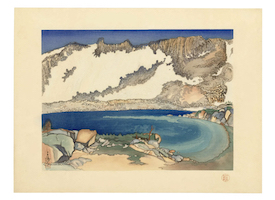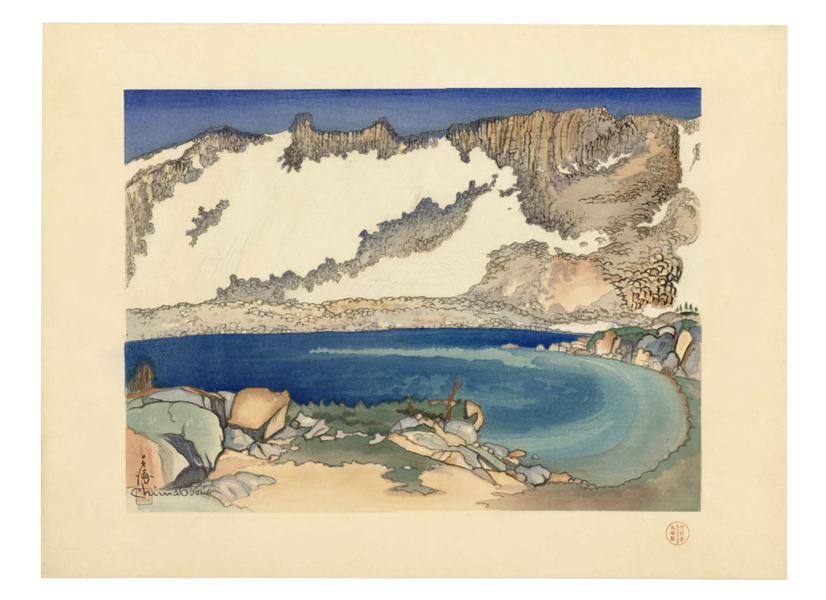
NEW YORK — Japanese-born painter Chiura Obata (1885–1975) came to San Francisco in 1903 at about age 18 and during seven decades of art-making became indelibly ingrained in the history of California art. His story is unique and multilayered.
Obata left home at age 14 rather than attending military school, as his parents had wanted. Instead, he spent three years apprenticing with a painter in Tokyo. After immigrating to the United States, he worked while finishing his art studies. Left homeless by the great earthquake of 1906, he persevered and became an illustrator for Japanese magazines. Like other Asian immigrants, he faced racism long before the bombing at Pearl Harbor in 1941.
It’s little surprise, then, that he might have been drawn away from the city crowds and the people who ostracized him to paint the rugged wildness of California and the West — what he called the “Great Nature.”
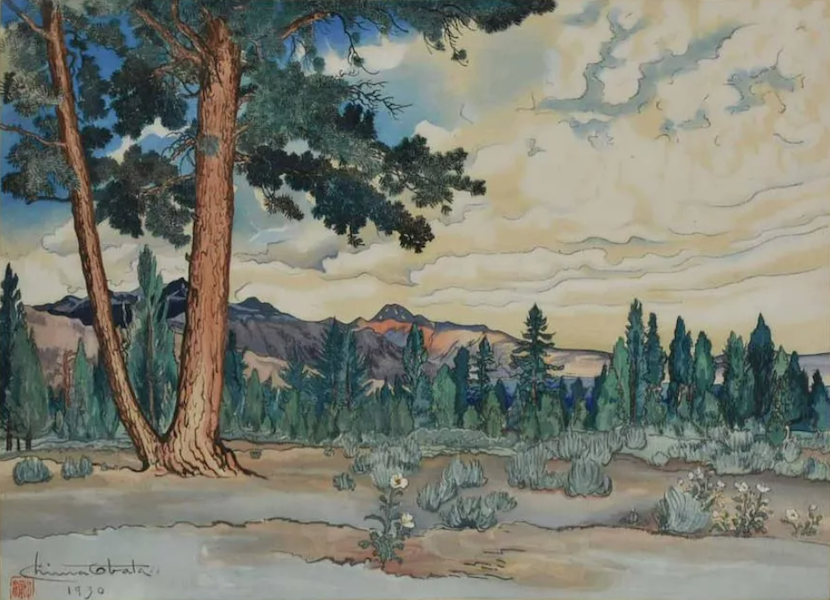
Even as some of his fellow Japanese artists adopted Western techniques or mediums, Obata stayed true to traditional Japanese brush-and-ink techniques and primarily worked in ink and watercolor throughout his career. He spent much of the 1920s traveling into the backwoods of Yosemite and the Sierra Nevadas to paint landscapes. He was at his best when depicting sweeping views of the Grand Canyon, the Mono Crater lava flows and Yosemite’s famous vertical rock formation, El Capitan, but he also excelled at intimate small-scale scenes.
He kept pursuing the quintessential immigrant’s dream, and eventually, his artwork was well-received. He became an art professor at UC Berkeley and he and his wife, Haruki, even opened an art supply shop in Berkeley, where she gave ikebana classes. They were forced to permanently shutter the store after it was shot at in 1941 amid rising racial tensions toward Japanese Americans. He spent 11 months interned in two of the Japanese-American concentration camps that were established in the U.S. during World War II. Focusing on teaching art, he founded art schools for about 600 camp detainees, whose work was so good that it was shown publicly away from camp.
Combining highly detailed lines with washes of color, Obata’s early watercolors, woodcuts and paintings of California’s landscapes, especially water scenes, are highly sought after. He was particularly drawn to redwood forests, lake basins, beaches and hot springs. He spent much time sketching and painting in the High Sierra to create works such as Lake Basin in High Sierra, of which a first edition Japanese woodblock print dating to 1929/30 achieved $25,000 plus the buyer’s premium in September 2021 at Ukiyoe Gallery Japanese Woodblock Prints.
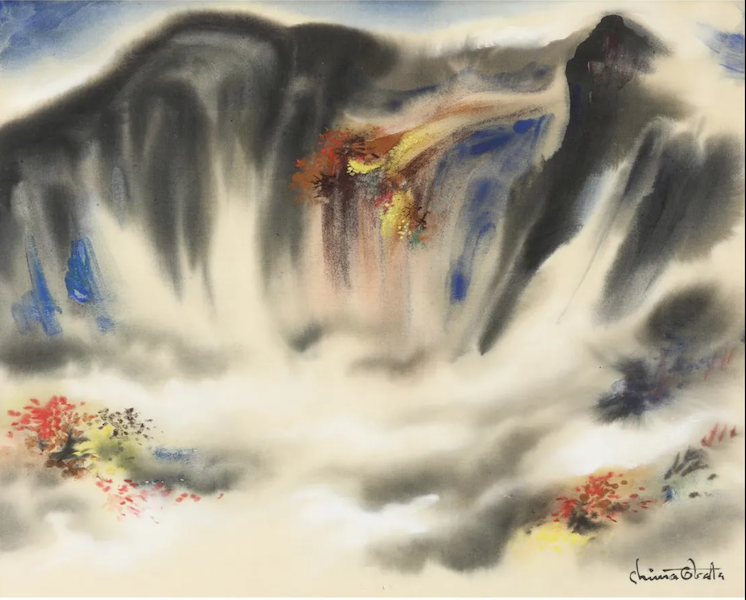
Many of Obata’s works depict water features, and a favorite spot was the Gilroy Yamato Hot Springs, which opened in 1938 as a mineral bath resort in the Diablo Mountain Range, south of San Francisco. Several of his artworks bear the title of Mountain Mist, some with added descriptors of the Gilroy springs. A dreamy, almost abstracted watercolor of a fog-enrobed landscape, simply titled Mountain Mist, realized $16,000 plus the buyer’s premium in April 2022 at Clars Auction Gallery.
About a dozen miles east of Yosemite is an ancient saltwater lake, Mono Lake, that Obata frequented, returning to hike again and again. He painted the lake in different seasons and different light. A 1930 woodblock, Morning of Mono Lake, which brought $10,000 plus the buyer’s premium in February 2021 at William Smith Auctions, was part of Obata’s World Landscape Series: America, in which 100 compositions were chosen to be printed in portfolios. Under the supervision of master printers in Japan, the project reportedly took more than 18 months to complete and involved more than 30 carvers and more than 40 printers. Another woodcut, printed by Obata’s master printer, Tadao Takamizawa, is of an evening scene at Mono Lake, titled Evening Glow of Mono Lake, which realized $8,000 plus the buyer’s premium in May 2018 at Redlands Antique Auction.

Trained in Japan in sumi-e, the ancient Asian art of painting with black ink, Obata used this technique along with others, some more contemporary. He noted in interviews that this technique gave his art an air of elegance and allowed him to express his ideas with just a few brushstrokes or drops. While most of his paintings were of American landscapes, on occasion he painted figures and scenes relating to his Japanese heritage. A circa-1960 silk painting, done late in his career and titled Deer Dance (Folk Dance), Scare Crow, Northeastern Prefecture, Japan, sold for $15,000 plus the buyer’s premium in August 2022 at Clars Auction Gallery. The watercolor, gouache and gold leaf on silk work is notable for the use of what’s known as a “gold dust” effect, which Obata is believed to have used on only one other painting — a painting he made while he still lived in Japan. Perhaps, at age 75, he was returning to his roots and revisiting subject matter and techniques used in his native country. He was not content to restrict himself to one style, though. “In addition, the masks of the dancers are painted with a very thick paint, which creates a three-dimensional effect that appears almost quilted,” according to the auctioneer’s catalog description of this particular work.
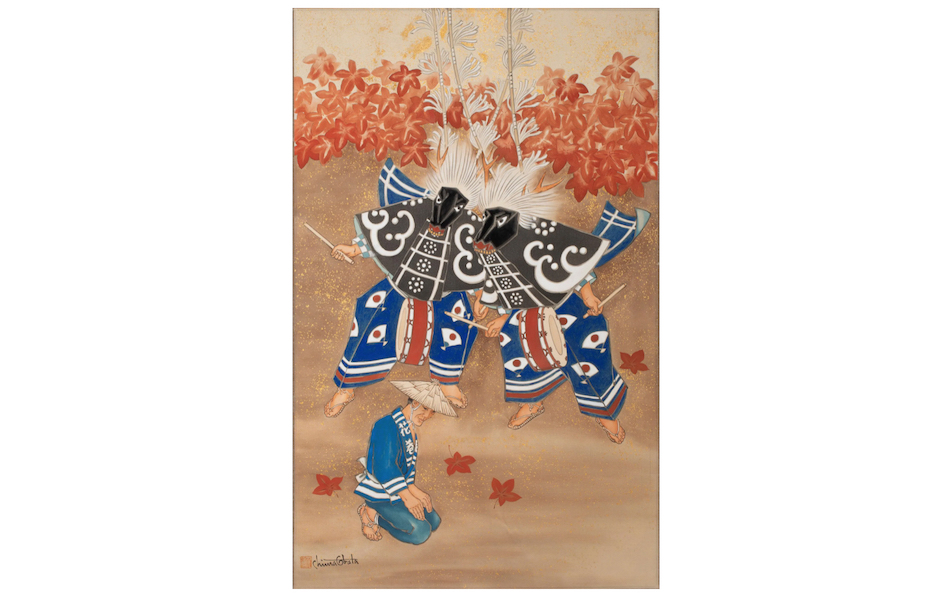
Obata helped audiences discover and rediscover the natural beauty of California and the West through his distinctively styled works of art. As inspired as they are inspiring, these riveting pieces, and to a lesser extent, his personal story, continue to attract new fans.


